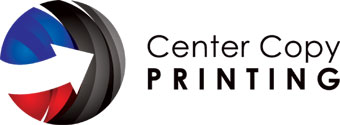What’s the best size for a flyer or brochure to meet your marketing goals? Choosing the right size is crucial. It influences everything from cost and design to audience engagement.
Understanding flyer and brochure sizes is essential whether you’re planning a quick sale announcement or an in-depth product guide. Let’s explore the differences, standard sizes, and unique considerations for each.
What Makes Flyers and Brochures Different?
Flyers and brochures may seem similar, but they serve different purposes. Their primary differences include:
- Structure: Flyers are single, flat sheets. Brochures are folded to include multiple sections.
- Purpose: Flyers are ideal for quick messages or promotions. Brochures are better for detailed information and storytelling.
- Longevity: Flyers are often temporary. Brochures are designed to last longer.
Standard Flyer Sizes and Their Uses
Flyers are typically printed on standard-sized paper. This keeps costs low and makes distribution easy. Common flyer sizes include:
1. Letter Size (8.5” x 11”): Best for detailed content or wall displays.
- Tip: A flyer for a café’s grand opening could include a map, menu highlights, and promotional offers.
2. A4 (8.3” x 11.7”): Slightly narrower than letter size. Popular internationally.
- Tip: Perfect for printing instructions for a community event or yard sale.
3. A5 (8.3” x 5.8”): Half the size of A4. Ideal for handouts or mailing.
- Tip: Use this size for event invitations or discount coupons.
4. A6 (5.8” x 4.1”): Compact and great for insertions into envelopes.
- Tip: Advertise local services with an eye-catching design and contact details.
5. DL (8.3” x 3.9”): Slim and elegant. Excellent for mailing campaigns.
- Tip: Promote a new product with a simple, high-impact design.
When to Choose a Brochure Over a Flyer
Brochures work better when detailed information is needed. Their folds allow for structured storytelling. This is ideal for guiding readers step by step. The most common brochure folds include:
1. Tri-fold: Divide the paper into three sections. Offers a concise yet comprehensive layout.
- Tip: Showcase a real estate property with images and detailed descriptions on each fold.
2. Half-fold: A straightforward two-panel design. Perfect for menus or event programs.
- Tip: Use a half-fold brochure to outline the agenda for a business conference.
3. Z-fold or Accordion Fold: Adds an interactive element to engage readers further.
- Tip: Create a travel guide highlighting destinations with images and captions.
Standard Brochure Sizes:
- Letter Size (8.5” x 11”)
- Legal Size (8.5” x 14”)
- Tabloid Size (11” x 17”)
- Smaller Sizes (5.5” x 8.5” or 8.3” x 11.7”)
Key Considerations for Flyer and Brochure Design
Your flyer or brochure’s size and design should align with its purpose. Consider the following key factors:
1. Distribution Method:
Flyers for bulletin boards should be larger for visibility. Brochures for mailing must fit standard envelope dimensions.
- Tip: For mailing invitations, choose a DL-sized flyer or a tri-fold brochure. They fit snugly in standard envelopes.
2. Content Volume:
Flyers are great for concise messages. Brochures are ideal for in-depth information.
- Tip: A luxury spa’s brochure can include sections on services, pricing, and client testimonials.
3. Material Durability:
Use lightweight paper for short-term flyers. For long-term brochures, choose high-quality coated materials.
- Tip: A financial consultancy’s brochure can use glossy, heavyweight paper for a premium feel.
4. Design Impact:
Flyers need bold designs to grab attention quickly. Brochures offer space for refined layouts.
- Tip: A boutique store flyer might feature vibrant colors and bold fonts. The brochure can include curated styling guides for seasonal collections.
Non-Standard Sizes and Unique Materials
Sometimes, your marketing needs require something beyond the standard. Custom sizes and materials can make your brand stand out:
1. Tall and Narrow Flyers: These work well as bookmarks or ticket inserts.
- Tip: A flyer for a book launch can include a detachable coupon for a free drink at the event.
2. Water-Resistant Brochures: Perfect for outdoor or adventure use.
- Tip: A wildlife tour brochure with waterproof pages ensures durability in any weather.
3. Interactive Elements: Fold-outs, die-cuts, or UV-reactive paper can leave a lasting impression.
- Tip: A glowing flyer for a nightclub event could illuminate under black light.
How to Choose the Right Flyer or Brochure Size
Ask yourself these questions:
- What’s the purpose of this material?
- How will it be distributed?
- What budget do you have for printing and materials?
Conclusion
Understanding flyer and brochure sizes helps you make informed choices for your marketing materials. Flyers are perfect for short, impactful messages. Brochures are better for conveying detailed information. Consider your goals, content, and distribution method to pick the size and material that best suits your needs. Ready to create impactful marketing materials? Center Copy Printing specializes in custom postcard printing and offers professional solutions for your digital print business. Let us help you leave a lasting impression.
